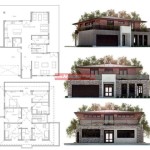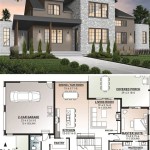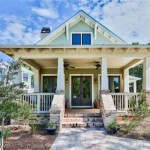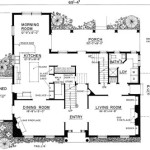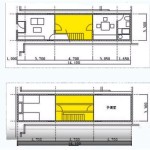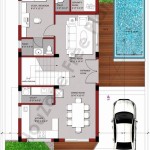Essential Aspects of 1980s Split-Level House Plans
The 1980s witnessed a surge in popularity of split-level house plans, characterized by their unique arrangement of living spaces across multiple levels. These versatile designs catered to the needs of families seeking both style and functionality.1. Multi-Level Layout
Split-level houses are typically built on a sloping lot, with the main living areas situated on a higher level than the garage and entryway. This creates a sense of separation between public and private spaces while maximizing natural light throughout the home.
2. Vaulted Ceilings
In the 1980s, soaring vaulted ceilings became a hallmark feature of split-level homes. They expanded the vertical space in the living room, dining room, and entryway, creating a feeling of grandeur and openness.
3. Open Floor Plan
Many split-level plans embraced an open floor plan, combining the living, dining, and kitchen areas into a single, expansive space. This allowed for easy flow between these rooms, facilitating family interaction and entertaining.
4. Large Windows
The 1980s saw a trend towards larger windows, which were often placed strategically to capture natural light and provide panoramic views of the surrounding landscape. Floor-to-ceiling windows were particularly popular in split-level homes, creating a seamless connection between the interior and exterior.
5. Sunken Living Room
A sunken living room was a common design element in split-level homes. This recessed area was typically a step or two below the main level, creating a cozy and intimate space for relaxation and conversation.
6. Fireplaces
Fireplaces were a popular feature in 1980s split-level homes, providing a focal point in the living room or family room. They added a touch of warmth and ambiance to the home, especially during cold winter months.
7. Secondary Level
Most split-level homes had a secondary level, which typically housed the bedrooms and bathrooms. Some plans featured a split-level staircase that connected the main and secondary levels, adding both visual interest and functionality.
8. Exterior Design
The exteriors of 1980s split-level homes often showcased geometric shapes and sharp angles. Stucco, brick, and stone were popular cladding materials, and the use of large glass panels was common.
9. Practicality
Despite their unique design, split-level homes were highly practical for families. The multi-level layout provided ample space for privacy, while the open floor plan facilitated social interactions. Large windows allowed natural light to permeate the home, reducing energy costs.
10. Customization
Split-level house plans were highly customizable, offering buyers the flexibility to tailor their homes to their specific needs. Options for customization included the number of bedrooms and bathrooms, the size of the kitchen, and the placement of windows and doors.

Image Result For Split Level Floor Plans 1980 House Modular Home

Pin By Kelly Case On 20th Century Houses 1950 1980 Modern House Plans Mid Vintage

Untitled House Plans With Pictures Mid Century Modern Vintage

Mid Century Modern Ottawa Favourite Plans South Split Level Floor House

Familyhomeplans Com Plan Number 45253 Order Code 01web Split Level House Plans Modular Home Floor
Architecture Split Level Houses Why Cyburbia Urban Planning Placemaking And More
Split Level House 1970s 1980s Suburban 3d Warehouse

Bi Level Split Homes Offered Hybrid Design In Lancaster From 1960s To 80s Architecture Column Com

Can A Raised Ranch Home Become Traditional Laurel
Architecture Split Level Houses Why Cyburbia Urban Planning Placemaking And More


